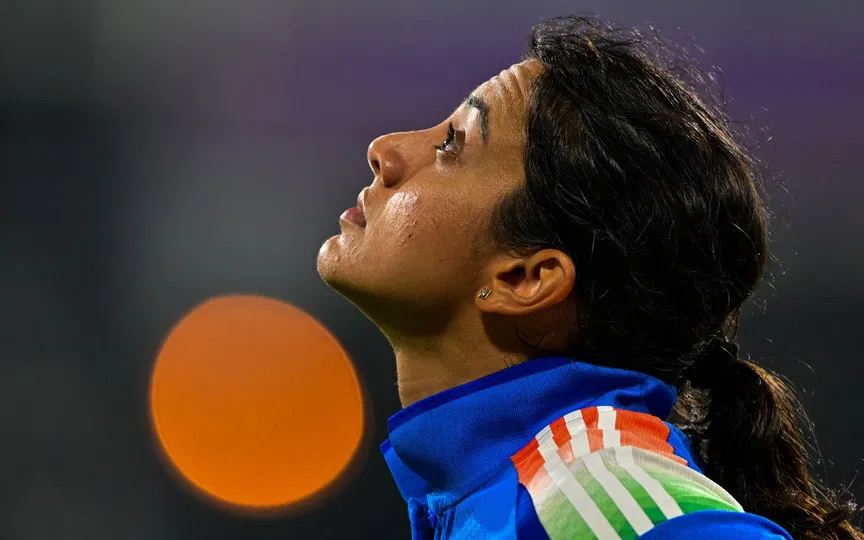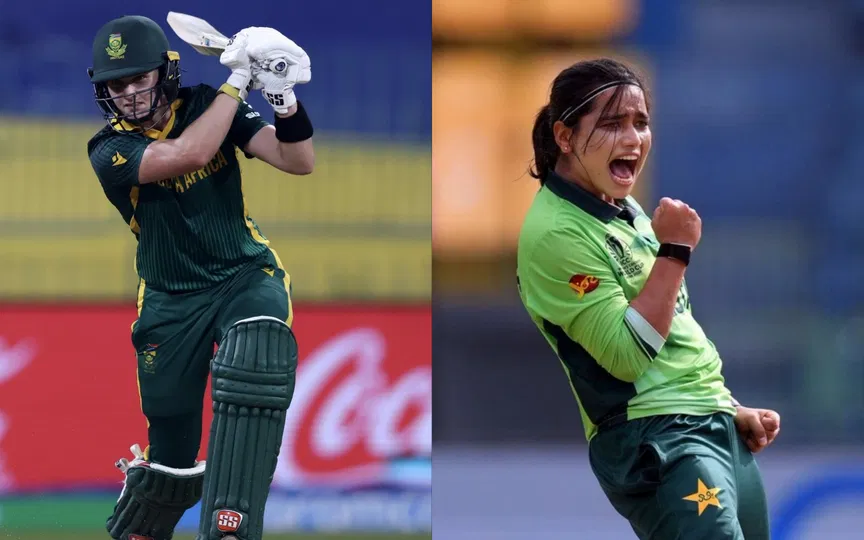![Smriti Mandhana once again took the fall for India's loss [Source: @lav_narayanan/X.com]](https://onecricketnews.akamaized.net/parth-editor/oc-dashboard/news-images-prod/1760963076226_Smriti_Mandhana_India_England_Women_World_Cup_2025.jpg?type=hq) Smriti Mandhana once again took the fall for India's loss [Source: @lav_narayanan/X.com]
Smriti Mandhana once again took the fall for India's loss [Source: @lav_narayanan/X.com]
When Smriti Mandhana walked back to the pavilion on Sunday night, disappointment written across her face, you could almost feel India’s hopes leaving with her. Although she had done everything right.
Opening the inning for India while chasing 289 runs, Mandhana played with grace, composure, and purpose, crafting a fluent 88 off 94 balls against England in Indore.
Yet, when India stumbled to a 4-run defeat, the narrative quickly turned familiar, “Mandhana threw it away.”
It’s easy, perhaps too easy, to point fingers at the most visible name when a team collapses. But here’s the truth, Smriti Mandhana didn’t lose this match for India. India lost it to Smriti Mandhana.
Mandhana could have played smartly after a good start
Smriti Mandhana’s innings was the backbone of India’s chase of 289. Along with captain Harmanpreet Kaur (70) and Deepti Sharma (50), she stitched partnerships that made the impossible seem within reach.
The Holkar crowd roared every time she found the gap or danced down the track. At one point, victory looked inevitable; India needed just 57 runs off 57 balls with 7 wickets in hand.
Then, in the blink of an eye, it all fell apart. Mandhana miscued one to long-on, and suddenly the innings unravelled. Yes, the shot was poor, given the context of the game.
From an experienced batter like Smriti, one would expect better. She should’ve converted the 88 runs knock into a hundred and finished the game. But one mistimed shot shouldn’t erase 40 overs of brilliance.
Where was the support?
Once Smriti Mandhana departed, India’s chase looked toothless. Richa Ghosh and Deepti Sharma both perished trying to accelerate, and the lower order simply couldn’t handle England’s calm, disciplined bowling from Sophie Ecclestone and Linsey Smith.
This collapse isn’t new. India’s recurring struggle to close out matches has haunted them for years. When a player like Mandhana or Kaur sets the platform, the rest of the lineup needs to step up.
After all, a total of 11 players are representing the country, and the weight of the billion expectations shouldn't fall on Mandhana alone.
Instead, the momentum vanished the moment the top order fell, proving once again that India’s batting still leans heavily on its stars. If the lower-middle order isn't even capable of closing a run-a-ball situation, then the problem is deep-rooted.
The bigger picture: Team game, team loss
Cricket has never been a one-woman show. Heather Knight’s century didn’t win England the game alone; it was backed by Sciver-Brunt’s discipline, Ecclestone’s control, and fielders who didn’t fumble under pressure.
India, on the other hand, lacked that collective composure when it mattered. It’s unfair to make Smriti Mandhana the scapegoat every time India fails to cross the finish line.
Her five 50-plus scores this year, her consistency, and her hunger to fight till the end make her one of the best in the world right now.
Blaming her for one false shot ignores the effort that got India within touching distance in the first place.
Final word: Let’s give credit where it’s due
Smriti Mandhana isn’t perfect, and no cricketer is. But she’s been carrying India’s batting for months, often under immense pressure and without much support from the middle order.
Yes, the loss hurts. Yes, the semi-final hopes are slipping. But blaming Mandhana won’t fix India’s problems, but fixing their finishing will.
Because cricket, at the end of the day, is not a one-soldier war. And Smriti Mandhana has already fought enough battles alone.
.jpg)


.jpg?type=mq)

.jpg?type=mq)
